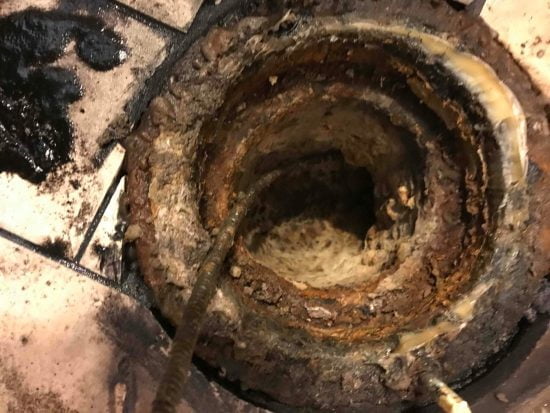Human-caused clogs in pipes are a major issue in the United States. But did you know your supply pipes and DWV pipes may clog for other reasons? There are many other sources for a pipe blockage. For example, when galvanized pipes corrode, that corrosion may create heavy buildup. This heavy buildup over time can cause the water to slow down as it flows through it – making for an even grosser image when considering what’s going on inside your drinking lines and in your water!
Corrosion, shale build-up, rust and even drain line back-ups can all cause your vent lines to become compromised. In fact, such bad corrosion can eventually lead to clogged lines which prevents the drain system from functioning properly. Unless proper care is taken and clogs are avoided, you may be facing a repipe much sooner than the life expectancy of the pipes in your home.
In order to avoid the expense and disruption from major plumbing system failures, it is important that you are proactive rather than reactive. For example:
1. Season Maintenance Plans
To keep your home’s plumbing system operating at peak efficiency, it is important to maintain a preventive maintenance schedule. Your plumber will be able to recommend specific steps that you can take for routine checkups and repairs in order to prevent potential issues before they occur or worsen as time goes on from neglecting them. This is even more critical to do if you live in an area that experiences seasonal changes and weather extremes.
2. Monitor for Symptoms

If you notice any odors, slow drains, or signs of a backup from your plumbing system then it may be time to call in some help! Clogs are common and happen over the years. But there is a difference between an accidental clog from something accidentally put down a drain and a systemic clog. A systemic clog is one that occurs due to a compromised plumbing system. Either way, contacting Roto-Rooter Plumbing & Water Cleanup for a free on-site estimate is always an option.
3. Clean Your Pipes Regularly
Don’t wait for a problem to become an even bigger problem! There are multiple ways to clean your pipes. For shorter runs of 50 feet or less, use a mechanical “snake” to break up the obstruction. For larger runs or larger pipes, we recommend hydro-jetting. Hydro-jetting consists of a high-pressure stream of water that breaks through blockages. Contact a professional plumber if you are in need of a pipe to be hydro-jetted.
4. Know When To Replace/Repair Pipes
If widespread blockages continue to occur despite clearing, you most likely have a systemic problem – especially if blockages occur in the same location. A video camera inspection of your pipes can help pinpoint the location and severity of the blockages. This is more common in older houses so there’s no need to be alarmed. Roto-Rooter has multiple options depending on the underlying issue at hand. If this is something you are dealing with right now, contact Roto-Rooter. A technician can provide you with options on repairs such as trenchless plumbing techniques as well as pipe-lining.
While clogs happen to all of us and can be quite frightening when they occur, taking a proactive approach to your buildings plumbing system can help prevent some long-term headaches.